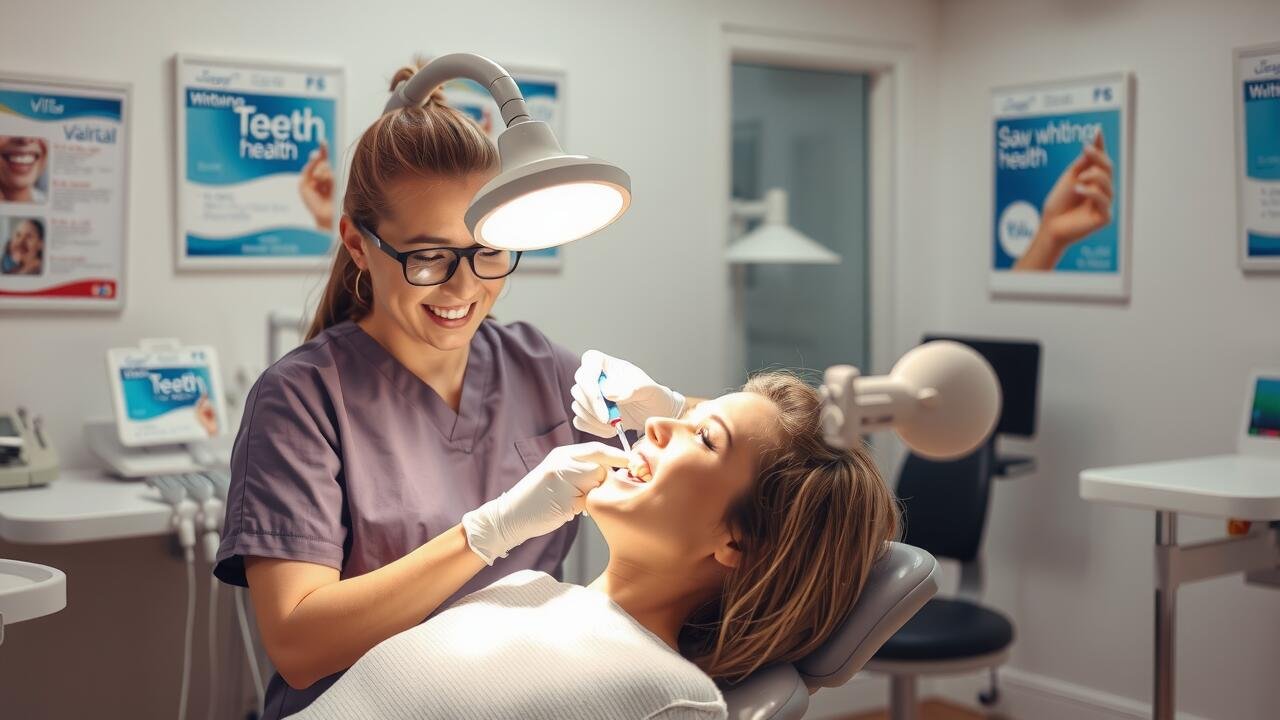
Foods and Beverages to Avoid
To maintain the bright results from your recent treatment, it’s crucial to be mindful of the foods and beverages you consume. Dark-colored drinks like coffee, tea, red wine, and soda can quickly undo the effects of whitening. Additionally, certain foods like berries and tomato-based sauces can also lead to staining. Making a conscious effort to limit these items is essential for preserving your smile’s brilliance after teeth whitening in Ogden, Utah.
Even seemingly harmless foods can contribute to discoloration. For example, while some fruits are healthy, their deep pigments can stain your teeth over time. Sauces rich in color, such as soy sauce and curry, pose similar risks. By being cautious and choosing lighter options, you can extend the lifespan of your whitening treatment and keep your teeth looking their best.
Staining Agents to Watch Out For
Certain foods and beverages pose a significant risk for staining teeth even after a whitening treatment. Dark-colored liquids like coffee, tea, and red wine can quickly lead to discoloration. Foods such as blueberries, dark chocolate, and soy sauce also contribute to this issue. Being aware of these staining agents can help maintain the results of your teeth whitening in West Valley City, Utah.
Additionally, habits like smoking or using tobacco products can severely undermine the benefits of whitening procedures. The tar and nicotine found in these products will leave unattractive yellowish or brown stains on the enamel. Limiting exposure to these staining agents is crucial for prolonging the effects of professional whitening treatments.
Touch-Up Treatments
After an initial teeth whitening treatment, many individuals consider touch-up treatments to maintain their bright smiles. The duration of results can vary, typically lasting from several months to a few years, depending on factors like diet and oral hygiene. Regular maintenance can help prolong the effects and keep teeth looking their best. Dental professionals often recommend scheduling touch-ups at least once a year to achieve optimal results.
For those in Salt Lake City, Utah, various options for touch-up treatments are available. In-office treatments provide immediate results, while take-home kits allow for flexibility and convenience. Consulting with a local dentist can provide insights tailored to individual needs, ensuring that the whitening process remains effective. Regular check-ins can also help monitor any changes that may affect the longevity of the initial whitening treatment.
When to Consider a Second Session
Individuals may want to consider a second session of teeth whitening if they notice their smile has dulled or yellowed again after the initial treatment. This can happen due to various factors such as diet, lifestyle habits, or the natural aging process. In areas where foods and beverages with staining properties are prevalent, it might be wise to schedule follow-ups more frequently. Residents enjoying the local culinary scene should be especially mindful of what they consume.
For those living in Utah, consulting with dental professionals can provide guidance on the right timing for a touch-up treatment. Each person’s dental health and resulting brightness can vary. Regular check-ups can also help determine the need for additional sessions, ensuring that results remain satisfactory. Engaging with a qualified dentist familiar with Teeth Whitening in Utah can lead to personalized recommendations based on individual needs and habits.
Natural Alternatives to Whitening
Natural alternatives to teeth whitening have gained popularity among those seeking a brighter smile without chemical treatments. Many people turn to options like baking soda, which is known for its mild abrasive properties that can help remove surface stains. Activated charcoal is another option that some use, as it is believed to absorb and lift stains from the teeth. However, the effectiveness of these methods can vary greatly from person to person, and caution is advised to avoid enamel damage.
In Utah, proponents of home remedies often explore ingredients like coconut oil for oil pulling, which may contribute to improved oral hygiene and a whiter smile over time. Another popular choice includes the use of hydrogen peroxide diluted with water as a mouth rinse. While these natural methods can assist in maintaining a Whiter appearance, consulting with a dental professional before opting for any treatment is recommended to ensure safety and effectiveness.
Effectiveness of Home Remedies
Home remedies for teeth whitening often include ingredients like baking soda, hydrogen peroxide, and activated charcoal. Many people claim these methods can lighten tooth color effectively and naturally. Nevertheless, scientific evidence supporting their efficacy is limited. Regular use of certain home ingredients can vary widely in results. Some individuals may notice slight improvements, while others may not experience any significant change.
When considering non-professional whitening options, safety should be a major concern. Overuse of abrasive substances might damage enamel instead of enhancing whiteness. For those in search of a more reliable outcome, seeking professional treatments like Teeth Whitening in Sandy, Utah, remains a popular choice. These services not only provide visible results but also ensure a safer approach to achieving a brighter smile.
FAQS
How long can I expect my teeth whitening results to last?
The longevity of teeth whitening results can vary, but typically, they last from six months to two years depending on individual habits and oral care.
What foods and beverages should I avoid to maintain my whitening results?
To prolong the effects of teeth whitening, it’s best to avoid staining agents such as coffee, tea, red wine, and certain berries, as well as acidic foods that can wear down enamel.
How often should I consider touch-up treatments for my whitening?
It is generally recommended to consider touch-up treatments every six to twelve months, depending on how quickly your teeth tend to stain and your dietary habits.
Are natural alternatives to teeth whitening effective?
Some natural remedies, like baking soda or activated charcoal, may offer mild whitening effects, but they are typically less effective than professional treatments and may require consistent use.
When should I think about scheduling a second whitening session?
If you notice that your teeth have significantly darkened or stained after your initial treatment, it may be time to schedule a second session, usually recommended about one year after the first treatment.


